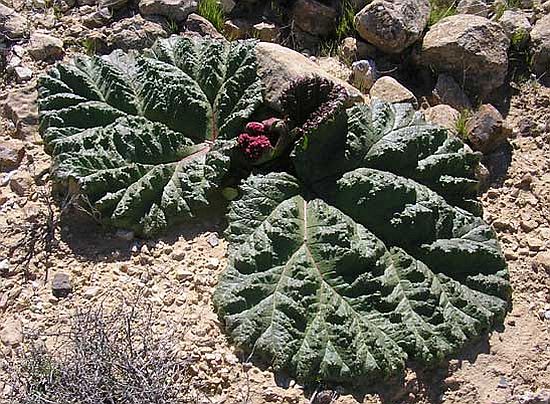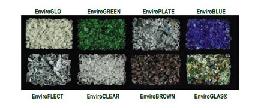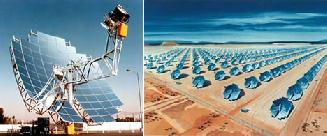
Eco Factor: Self-sustaining plant thrives in even the driest of conditions.
Researchers from the University of Haifa, have made an unusual discovery in the Negev Desert of Israel. Rheum palaestinum, better known as The Desert Rhubarb, is a plant which irrigates itself amid the arid conditions of the desert. In order to adapt to the harsh conditions of the desert, the plant has developed broad leaves with grooves and channels. This arrangement helps the plant to funnel every bit of rainwater to nourish its roots. This plant is one of a kind and is found only in Jordan and Israel.
How the ancients did it:
Prof. Yadun says that Nabaten people who lived in the Negev Desert after the second Temple period and late Byzantine period, set up stones in mounds in a manner that would funnel down the water for irrigation, before it infiltrated into the hills. This arrangement resembled the surface of a rhubarb, proving that the ancients exploited this physical principle in the best way they could.
Survival of the smartest:
The rhubarb has been able to survive in the arid conditions of the desert because it can collect up to 16 times more water than other plants of the area. On an average a rhubarb can collect 4.2 liters of water annually, with the largest variant collecting as much as 43.8 liters. The system is so well developed that not only its roots are fully nourished but the penetration of water into the soil is 10 times deeper that it would have been, had rain fallen directly on the surface. The waxy surface of the leaves further aids the funneling of the water.
A model for new water- collecting devices:
Although the plant was discovered 70 years ago, its unique funneling system has come to the limelight only with this research. The water intake capabilities of the plant can be used as a model for developing similar water collecting devices for agricultural purposes, especially in arid and semi-arid climatic conditions. Prof. Simcha Lev-Yadun, an Israeli researcher, says that in ancient times, people living in the Negev Desert used the same principle of water collection on a much larger scale. So can the plant provide a base for developing a revolutionary irrigation device? Yadun says as of now not much research had been done in this area but plastic could be used to collect water on the same principle. Seems like this small plant could lend to science a concept that may change the face of irrigation by maximizing water distribution even in arid areas.
Via: GreenProphet




